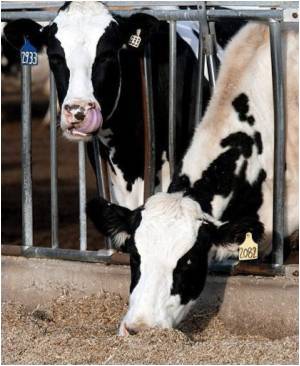Culling large numbers of livestock to control food-and-mouth disease could be reduced, suggests study.

"This study shows that what we thought we knew about foot-and-mouth disease is not entirely true," said Mark Woolhouse from the University of Edinburgh, a co-author of the study. "So, what we think we know about human influenza and other infectious pathogens might not be completely accurate either."
The report appears in the 6 May issue of the journal Science, which is published by AAAS, the international nonprofit science society.
Foot-and-mouth disease virus, or FMDV, is an RNA virus that infects cattle and other livestock animals, causing lesions on the tongue and feet, fever, and a runny nose. Each year, it's responsible for huge losses in the global livestock trade. Countries with endemic FMDV spend tremendous amounts of money vaccinating their cattle and farmers often kill off large numbers of livestock to control the disease once a clinical case has been confirmed. In 2001, the United Kingdom experienced the biggest FMDV epidemic to strike a developed country in several decades. Hundreds of thousands of animals were killed and billions of British Pounds were lost before the disease was controlled.
Now, researchers have performed experiments with cattle to characterize the precise incubation and infectious periods of the disease-causing virus in live animals. They found that even if the virus can be detected in a cow's blood sample the traditional way of measuring infectiousness it does not actually mean that the animal is infectious. In fact, a cow with FMDV is only infectious for 1.7 days, they say. After that, immune responses kick in and limit virus replication.
Bryan Charleston and colleagues from Pirbright Laboratory in the United Kingdom, along with Dr. Woolhouse, infected "source" cows with FMDV and studied how the virus was transmitted to other, uninfected cows. Their experiment is different from previous studies that have only estimated transmission rates for groups of animals, rather than individuals.
Advertisement









